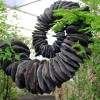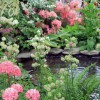As professional horticulturalists, Blondie’s Treehouse Inc. has worked closely with healthcare professionals to establish industry standards that maximize the benefits of having green plants within the healthcare system while minimizing the potential risks of soil borne pathogens.
Benefits of including plants in the healthcare system:
- Levels of dust and other air-borne particles can be reduced by as much as 20% by the addition of foliage plants
- Live indoor plants convert harmful VOC into carbon-based materials that they then use in the photosynthesis process to make their own food. The resulting byproduct is oxygen.
- Plants are a beneficial and cost-effective addition that softens the look of a harsh, clinical environment.
- Horticultural Therapy is a time-tested practice of using plants and gardening tasks to support the recovery of patients of all ages. Research shows that therapeutic gardens actually improve clinical outcomes, often helping patients to leave the hospital faster, take less pain medication, and suffer fewer complications.
- The tranquility of a garden or interior greenscape is beneficial not just to patients, but to their families and the health care workers as well.
Below are the standard procedures for responsibly introducing plant life into the healthcare system:
- Location.
- Strategically placed plants in less sensitive areas.
- Look but don’t touch. Plants placed in hard to reach areas or in extra tall planters.
- Research has shown that a window view helps alleviate patient stress and improve recovery. This means that plants can be placed in visible areas without having to directly share the patients physical environment.
- Top Dressing
- Because all of the pathogens of concern are only active and harmful once air born, a top dressing of stone, pebbles, decorative glass, etc. can provide the needed separation between the air and the soil.
- Green Walls
- Installation of a strategically placed living wall can prevent people from approaching the wall and touching the plant material.
- In a modular Green Wall system a landscape fabric can potentially cover the soil as the young plants are inserted into small incisions made into the fabric.
- Green Walls can be highly visible to all windows that look upon it, maximizing their benefit.
- Maintenance
- It is of upmost importance to have a dedicated maintenance program for every new plant installation. It is through consist monitoring that plants maximize their benefits to the environment. Several key points to having a maintenance program are:
- Consistency in watering. Plants thrive with consist watering. It prevents them from being stressed out and defoliating and attracting gnats and the like.
- Dusting. Plants must be dusted and cleaned regularly for the health of the plant and maximize the health benefits to the surrounding environment.
- For mold to form in soil it requires bacteria from a decaying source such as rotting leaves, consistently damp soil, and little or no light. Properly maintained plants such as those that are cared for by an interior landscape professional will not have the opportunity to produce mold.
- Proactive care. A trained technician will be able to make the necessary adjustments to the treatment of the plants in order to prevent concerns from developing into a problem.
- It is of upmost importance to have a dedicated maintenance program for every new plant installation. It is through consist monitoring that plants maximize their benefits to the environment. Several key points to having a maintenance program are:





